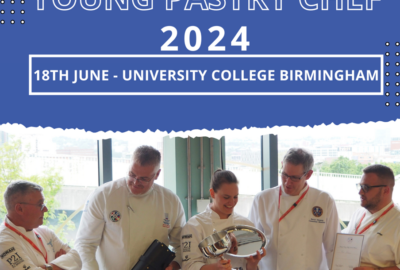New international guidelines governing texture modified foods have been unveiled to help caterers to provide suitable meals for dysphagia sufferers. The International Dysphagia Diet Standardisation Initiative (IDDSI) has developed a standardised way of naming and describing texture modified foods and thickened liquids for people with dysphagia with a global terminology.
Previously, a number of countries worked to develop dysphagia diet standards but all these standards use different terminology, labels, numbers and levels which added to the confusion for individuals and caregivers, as well as health professionals and researchers.
About dysphagia
- Dysphagia is a condition which causes difficulty with swallowing
- It is found in more than 12% of healthy older people with a reduction in muscle strength, alterations in the sense of taste and saliva
- It is also identified as a key risk for those with learning difficulties, as well as up to 57% of people with dementia
- It has been estimated that more than 51% of older people in care homes have difficulty swallowing
- By the age of 75, 1 in 5 women and 1 in 6 men will have suffered a stroke in the UK – of those, 37% are predicted to develop some form of dysphagia
- 22% of over 55s in the UK suffer from dysphagia
- Dysphagia affects 40-70% of patients having suffered a stroke, 60-80% of patients with progressive neurological diseases such as Parkinson’s disease, as well as 60-75% of patients undergoing radiotherapy for head and neck cancer
The new descriptors IDDSI Framework: International Dysphagia Diet Standardisation Initiative
Within the IDDSI Framework,
the food textures are:
0 Thin Flows fast like water and can be drunk through any type of teat/ nipple, cup or straw as appropriate for age and skill
1 Slightly thick Thicker than water, flows through a straw, syringe, teat/nipple but requires a little more effort to drink than liquids
2 Mildly thick Pours quickly from a spoon, but slower than thin drinks
3 Liquidised/Moderately thick Can be drunk from a cup but cannot be piped, layered or moulded on a plate as it is too thin. No oral processing or chewing is required
4 Puréed/Extremely thick Usually eaten with a spoon, can be piped, layered or moulded but does not require chewing. The food should fall off the spoon in a single spoonful when tilted and continues to hold shape on the plate
5 Minced & Moist Can be eaten with a fork or a spoon, can be scooped and shaped on the plate, small lumps visible within the food but these lumps are easy to squash with tongue
6 Soft & Bite-Sized Can be eaten with a fork, spoon or chopsticks (depending on hand control) and can be mashed/broken down with pressure from a fork. Chewing is required before swallowing
7 Regular Normal, everyday foods of various textures that are developmentally and age appropriate
Top tips for catering for dysphagia patients
By Preston Walker, chef director of Oak House Residential Home and regional chair for the NACC Midlands
- Create dishes on your menu that can be easily adapted for a variety of texture levels. This will save time in the kitchen and give you the ability to offer the same menu choice to all residents and patients
- Think about the cooking method – how can the best flavour be achieved and what is the best method to modify the texture effectively? Will cooking the dish at a lower temperature for a longer period of time make the dish softer and easier to puree?
- When creating dysphagia foods, consider the individual components of the dish and whether they can be modified separately. This will ensure the taste and presentation of the dish is as close to the original as possible
- Season food throughout the cooking process to aid the flavour profile of different foods. Good seasoning is hard to achieve after cooking, particularly if foods have been diluted with liquids
- Always check the consistency of foods against the IDDSI framework and texture requirements. Ensure checks are made at the point of service as foods can change texture when they are reheated and stored in hot trolleys for periods of time, making them inappropriate for residents and patients
- Presentation is key as we eat with our eyes! Present foods so visually they look as close to the original dish as possible
- Never serve your patients or residents food that you are not prepared to eat yourself!
Taking the lead In response to the new standards, Premier Foods has introduced the second phase of its Dysphagia Solutions Programme, with a guide to creating nutritious, safe and appetising meals.
The guide includes a series of inspirational recipe ideas, alongside practical tips and training. Premier Foods is also working with industry bodies to offer training and workshops to support chefs and caterers, as they transition towards using the new IDDSI framework within their kitchens.
Chefs and caterers can download the Premier Foods guide to International Dysphagia Diet Standards at www.premierfoodservice.co.uk.
HB Ingredients has also published a ‘Redefining Healthcare Catering’ guide, which is packed with recipes and solutions for catering for people with dysphagia and dementia, as well as how to use aromas to enhance the dining experience.
The guide is available to download at www.hbfoodservice.co.uk/healthcare.
For more information on the International Dysphagia Diet Standardisation Initiative visit http://iddsi.org.


